Motorhome Leisure Batteries- Complete charging & maintenance guide
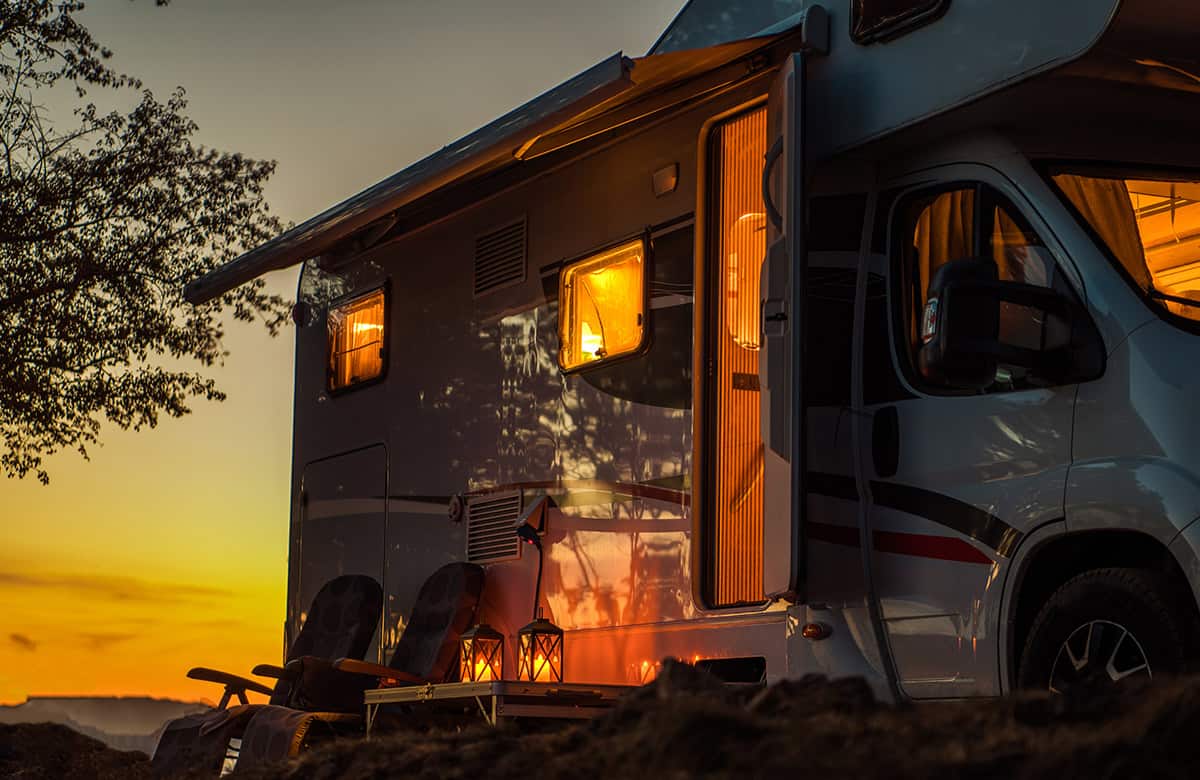
Got a motorhome, campervan or caravan? Want to know how to care for your domestic leisure battery, how to charge it, maintain it and generally keep it going, especially in winter? Or worried about it losing or not holding charge? Here’s everything you need to know about your motorhome leisure battery.
Don’t forget to grab your FREE motorhome maintenance checklist below
*We work hard to make this the best motorhome travel blog and road trip website possible, full of helpful content for you. The website is supported by our readers, so if you buy through links on this site we may earn a commission- at no extra cost to you. All opinions remain our own.
If you find this post useful, you can also treat us to a coffee – we promise to enjoy it while creating more useful content like this- we might even indulge in a biscuit (or two!)
JUMP AHEAD TO...
Motorhome Leisure Batteries
Let’s be honest- most new motorhomers or campervanners don’t really think about their batteries until they have a problem. Either the power goes, or the battery isn’t holding a charge or they arrive at their motorhome or camper after winter to find everything is flat and there’s no way to fix it.
If that’s you, don’t worry- you’re not alone. But a basic level of battery maintenance is important to keep your leisure batteries healthy and happy for their lifespan- and make that life span as long as it can be. Your motorhoming will also be much easier if you understand what your leisure battery is there for and how you can help it!
It can also help on your yearly motorhome habitation check (or if you do your own) if you have a basic understanding of how it all works.
Motorhome leisure batteries for beginners
So, let’s start at the beginning and go over some basics.
If you have a motorhome or campervan, you’ve probably got both an engine starter battery (the one which starts your vehicle and is commonly found in the engine bay) and a leisure or domestic battery.
NOTE: If you are buying a new CARAVAN, they are often supplied without a leisure battery, so you will need to buy one before your first trip.
The motorhome leisure battery is usually NOT in the engine, and is found somewhere in the camper habitation area. Ours is under the driver seat, but on our last van it was under the floor near the oven. Check your motorhome manual if you’re not sure.
In this post, we’re going to be focussing just on the leisure battery, so you shouldn’t need to go anywhere near the engine bay! We’ll be talking about the basics of leisure batteries, how to choose one, how to care and maintain them (especially in winter!) and what to do if they are losing charge, won’t charge or seem to be completely dead.
Don’t worry- this post isn’t for experienced electricians. You don’t need to understand amp hours, volts or ‘deep-cycle’ in order to care for your motorhome batteries. And no maths is required (ok, a teeny tiny bit might be- but I promise you can do it.)
Why do you need a motorhome leisure battery?
The domestic leisure battery runs all the power in the habitation area of your van, whenever you’re not plugged in to mains power. It is used for habitation lights, water, toilet, blown-air camper heating, 12v chargers and anything else electrical.
IMPORTANT– the leisure battery only supplies 12v in your van. So, if you are on battery power, you CANNOT use your 240v (normal 3-pin plug) sockets. So no electrical kettles, or toaster, or microwave (unless you have a motorhome generator or an invertor- but that’s a post for another day.)
In order to be able to provide that power, the battery ‘stores’ it. Think of it like a bucket of water. You need to put power into the battery. When it’s full, no more power can be stored. Then, as you use the power, it’s drained down. Once it’s gone, it’s gone until you replenish the power.
The big difference between your campervan leisure battery and the bucket of water is that you CANNOT completely empty the leisure battery- doing this will kill it. In reality, you can only use about 50% of the power in your leisure battery before you need to stop draining and start recharging.
Can’t I just plug into mains power all the time? Do I really need a leisure battery in my motorhome?
You could, but the other job of a leisure battery is to smooth out irregularities in the power. Without this, you could end up damaging appliances due to power spikes or having appliances which need constant power (like alarms or trackers) going off and on regularly due to power fluctuations.
However, if you plan to spend most of your time in your motorhome, campervan or caravan on a campsite, you don’t need to buy a top-of-the-range leisure battery as you won’t be putting it through as many cycles as someone who mainly stays off-grid.
Why is your motorhome or camper leisure battery losing charge?
The other thing to understand is that the power in your battery is not like water in a sealed container. Just like water in a bucket left outside on a warm sunny day, the power in your leisure battery will slowly… disappear (no, it doesn’t evaporate like water!)
It’s like when you get a static shock and your hair stands on end. Eventually, that energy just dissipates. The same thing happens to your motorhome batteries (both engine and leisure).
That’s why you often return to your motorhome, camper or caravan after winter or a period of inactivity and find the batteries flat. Even if you’ve turned everything off and you’re convinced nothing is causing the power to drain eventually, over time, the battery will be fully discharged and/or dead.
But don’t worry- with proper maintenance and care, you can protect your batteries, even in cold weather, and use them for several years.
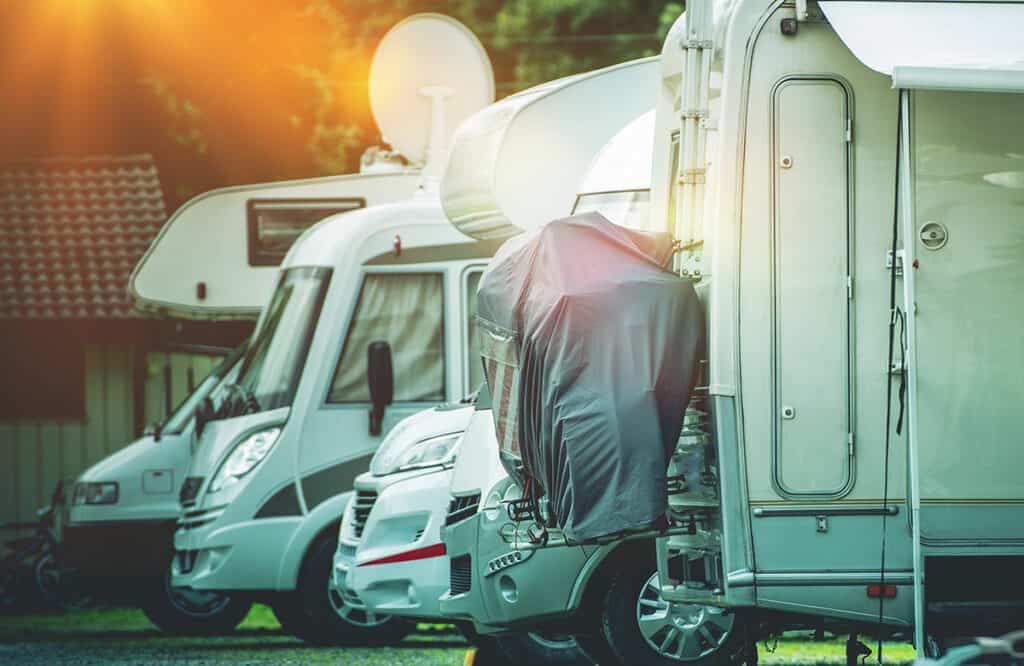
Difference between an engine battery and a domestic leisure battery
The two types are not the same and you should buy the appropriate battery for the job.
Engine starter batteries (or car batteries) have thinner plates and are designed for short, sharp bursts of high power in order to crank your engine and get it going.
Leisure batteries are designed for slow release over a prolonged period of time, followed by re-charging. This is called ‘deep-cycling’. Leisure batteries are sometimes referred to as auxillary batteries too.
“Can I use a car battery instead of a leisure battery?”
You cannot use a leisure battery in your engine (it doesn’t have the ‘oomphf’ to get the engine started), but you could use an engine battery as a leisure if you really really had to. But it will not be anywhere near as efficient and we don’t recommend it.
There is a type of battery which can do both jobs (an AGM battery), but it’s not commonly used for motorhomes.
How many leisure batteries do you need in your motorhome or campervan?
Great question- and the simple answer is, it depends on your van and how you plan to use it.
On our last motorhome, we had an electric bed. We loved the idea of this, because it made life easier, but, in reality, that thing was stupidly power-hungry. For this reason, we decided to fit a second leisure battery into the motorhome (and it’s one of the many reasons we decided to simplify and downsize our motorhome.)
IMPORTANT: You MUST only put a leisure battery in the appropriate battery compartment. If there isn’t space for a second battery, you shouldn’t fit one. Also, you will need to declare fitting a second leisure battery to your insurance- they might require you to get it professionally checked.
On our latest van, and in several vans we’ve used, there has only been one leisure battery- and it’s been perfectly fine. We love going motorhome wild camping, and stay off-grid away from campsites as often as we can, and we still don’t feel the need for a second leisure battery (although we do have a solar panel, which makes a big difference.)
Motorhome wild camping guides for the UK & Europe
For information on how to find good wild camping places, WHAT to do when you’re there and how to stay safe, check out our step-by-step guide for motorhome wild camping in the UK and Europe, complete with database of 250+ overnight spots we’ve stayed with our motorhome.
Don’t forget to grab your free wild camping checklist here
Of course, the more batteries you have, the LONGER you will have battery power for. Note that I say longer, not more. You can’t fit 20 12v leisure batteries and suddenly have 240v power.
How long should a motorhome leisure battery last?
This is a common question, with two possible answers.
Do you mean how long can you use electrical items in your camper before the battery should no longer be used? That depends on the size of your battery and how much power you’re using. The more you have switched on, and the more ‘power-hungry’ the appliance, the quicker the battery will drain.
The number on the battery (for example, ‘110’) refers to ‘Amp-hours’ (Ah) which is the capacity of the battery- or how much power it can store. In simple terms, it could supply 1A for 110 hours or 10A for 11 hours.
Or do you mean how long should you keep a leisure battery before replacing it for a new one? The life of a leisure battery depends on several things:
- how frequently it is discharged
- how deeply it is discharged
- how quickly it is recharged
In order for your battery to last as long as possible, you need to keep it in a good state of charge. If it discharges to too low a level and is left for weeks (or even months during winter) without being recharged, then it will probably die. And you need a new one.
With proper care, you can expect a motorhome leisure battery to last around 5 years before it should be replaced. Of course, if things go wrong or aren’t maintained, you could end up buying a new leisure battery every year!
Types of motorhome leisure batteries
There are many types of leisure batteries, and you’ll hear all sorts of exciting terms thrown about like ‘lead-acid’, ‘wet batteries’ and lithium ion. Let’s have a look at the options.
Lead-acid leisure batteries
The most common form of leisure battery in a motorhome or camper is a lead-acid (although lithium iron is becoming more popular). These are also called ‘wet’ batteries because… they have liquid inside them.
Lead acid batteries will self-discharge over time. The speed of this depends on make, age etc. You need to be able to keep any eye on electrolyte levels, and top up as necessary.
You can get ‘open’ and ‘sealed’ lead-acid batteries. Open are the type you have to top up. Sealed are the ‘maintenance-free’ ones (more on those below.)
Lithium leisure batteries
Lithium batteries are another form of deep cycle battery. They are fully self-contained (maintenance free) and have their own charge manager. Because they don’t have lead, they typically weigh around half as much as an equivelant lead-acid battery- this can really help with your motorhome payload.
They can also be discharged (fully) and rapidly recharged while retaining a stable voltage level. They are great for motorhome owners who use their vehicles ‘off-grid’. They don’t self-discharge, are mostly maintenance-free and work well alongside an inverter.
However, they are expensive- as much as five times the cost of an equivalent, good quality, lead-acid battery
Lithium IRON vs Lithium ion
Bear with me- this is going to get confusing.
There are two common types of lithium battery- lithium ion and lithium iron phosphate. Lithium iron phosphate (LiFePO4) technology allows the most charge/ discharge cycles and (unlike lithium-ion batteries), prevents possible fire risks and explosions caused by overheating.
I have Lithium Iron Phosphate battery as my leisure battery and it’s brilliant. I highly recommend getting it fitted by properly approved installers (like Bluefix energy or Ecotree), so that you know it’s safe and going to function in the most efficiency from it.
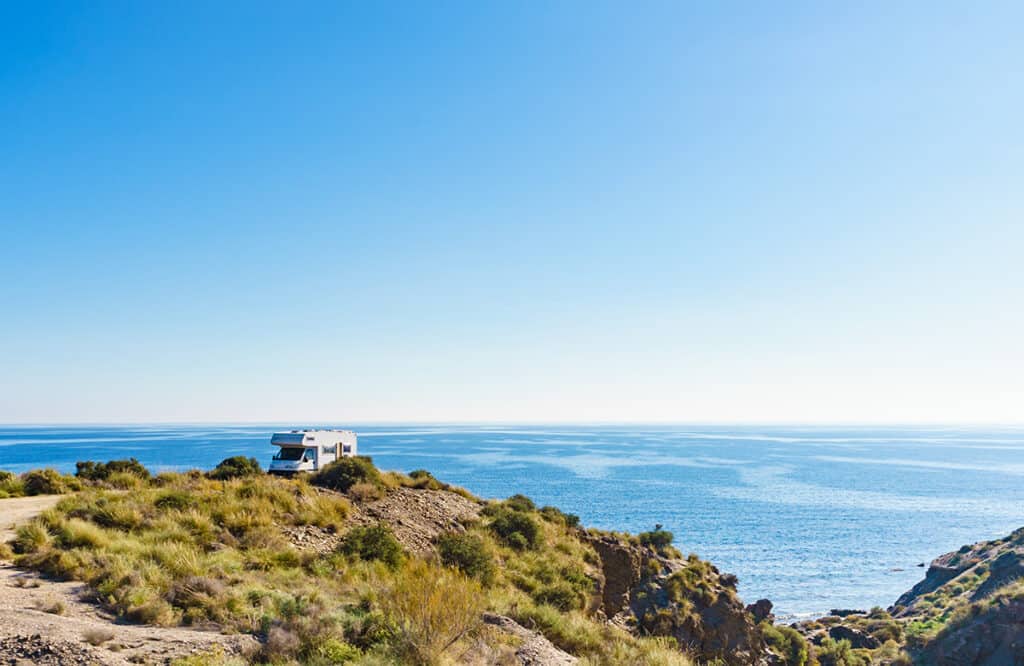
Other types of leisure batteries
- AGM batteries – Absorbent Glass Mat batteries have matting between the plates that filter the sulphuric acid inside the battery, making it more resilient and able to withstand a greater number of charging cycles than a typical lead-acid. They can be used as both starter and leisure batteries. The downside is that they are much more expensive to buy.
- Gel batteries – These are used in vehicles with a high risk of damage or crashing, such as quad bikes or jet skis. They use gel rather than acid, which reduces the risk if they are damaged in an accident. Some foreign brands of motorhomes or campers are now fitted with these.
- Maintenance-free batteries – Conventional batteries have removable caps to allow the acid levels to be checked and topped up with deionised water. A new option is a maintenance-free battery, which is a sealed unit and cannot be topped up, but doesn’t need to be, due to the way it is charged.
Buying & Choosing a motorhome or camper leisure battery
If you find yourself needing to buy a leisure battery for a motorhome, campervan or caravan, it can be a little overwhelming.
As a rough guide, the heavier the battery is, the more lead it contains= ability to hold a larger capacity of charge. If you want a deep cycling leisure battery (which you probably do) a heavy battery is a good place to start.
If you are going to be spending most of your overnight stops on motorhome club campsites with mains hookup, an inexpensive battery might be all you need. When connected to a mains supply, the battery is then only there to ‘smooth out’ the 12V output from the camper’s built-in charger.
However, if you plan to use CS/CL sites without electric hook-up or want to stay off-grid, a good quality, high-capacity battery is essential. Also, if you like to stay in one place for a while (and therefore the alternator isn’t recharging the battery), you’ll need a good leisure battery for that too. Only buy batteries that have been manufactured in the last 12 months- old batteries could already have sulphur corrosion.
As well as selecting the best model, you also need to make sure you aren’t being sold a starter battery in place of a leisure battery.
The best option to ensure you get a leisure battery suitable for a leisure vehicle is to buy one from the Verified Leisure Battery Scheme.
National Caravan Council Verified Leisure Battery Scheme
This scheme was set up by the National Caravan Council to give owners peace of mind about the quality of their battery. If you buy a leisure battery which displays the scheme’s logo, then it has been deemed reliable and fit for purpose by the NCC.
All verified leisure batteries will display the scheme’s logo as well as which category it falls into.

How are leisure batteries categorised under the NCC scheme?
There are three categories of verified leisure battery:
- Category A – High storage capacity batteries for use by caravan and motorhome users who prefer to operate away from an electrical hook-up point (people who do a lot of off-grid camping)
- Category B – Designed for users who use electrical hook-up on the majority of their trips, but also require greater power capacity. Devices such as motor movers (for caravanners) are likely to require a Category B battery even if electrical hook-up is used
- Category C – Verified batteries suitable for use when electrical hook-up is not available for a short time only
Are all leisure batteries covered by the scheme?
At present, only a few manufacturers are included. More are expected to join in the near future, and the NCC will publish updates as and when appropriate. You can find out more here.
What affects a leisure battery’s performance?
There are many things which can affect the performance and lifespan of a battery.
- Age – Most batteries have a marked decrease in performance after 5 years.
- Size – Obviously, the bigger your battery (in Ah, not physical size), the longer you can use your appliances for.
- Consumption– Having said that, if you’re running a lot of electrical appliances at once, you will drain the battery faster and it will need to be recharged sooner and much more often. The more you do this, the more you degrade performance and life of the battery.
- Temperature – Batteries hate cold. The colder the temperature, the worse the battery is going to perform. They really do sulk. If you check your battery, you’ll see the ‘amp hours’ rating will be based on a crazy warm temperature of around 25c, with each degree lower causing a 1% drop in performance. As an example, a 110Ah battery which is operating in 15c temperature will actually only perform as a 100Ah. If that’s not reason enough to go spend your winters in Spain, I don’t know what is!
The fact of the matter is, you can do calculations all you like, but always err on the side of caution and assume you need to recharge your leisure battery more frequently, and for longer, than you might think.
Looking after your Leisure Battery
So, as well as a bucket of water, think of your battery like a pampered dog. It wants to be warm (but not TOO warm), dry, given attention, fed often and given lots of time off to sleep. (I have a cocker spaniel curled up on my lap right now and believe me, the analogy is working!)
Here are some tips to get the most out of your leisure battery.
Do:
- Charge your battery after purchase. Remember, they’re discharging while just sitting there on the shelf in Halfords.
- Make sure you install the battery correctly, keeping it upright and properly secured (most motorhomes have straps for this. Use high-quality clamps for a good connection.
- Keep the terminals clean and free from corrosion. Some people add a light coat of vaseline/ petroleum jelly- we don’t do this but we do check them regularly.
- Make sure you know which appliances are constantly drawing on the battery. Trackers, alarms or security, rearview cameras, wifi dongles or the clock on the dashboard are all common culprits.
- Regularly check the water levels in the battery. You do this by unscrewing the caps and making sure the electrolyte level covers the lead plates. If not, top up with deionised water as required. Always wear full safety equipment when inspecting and maintaining the battery– that stuff is corrosive!
- Make sure the gas relief tube remains securely in place.
- Recharge the battery once it reaches 50% power. Never allow a battery to completely run down as this can kill the battery/ greatly reduce the lifespan
- If you aren’t going to be using the battery for a while, give it a properly good charge and then store it in a cool environment with an appropriate charger. You can leave in the van if you have an intelligent charging system or a trickle charger.
Don’t:
- Leave your battery in a discharged state for a prolonged period of time If you’ve been using the battery, make sure it is charged up again before you leave it in storage/ unused. If you don’t do this, a white deposit will form on the plates and the battery will be unusable (this is called sulphation)
- Over-charge your leisure battery. A fully charged 12V battery should have a voltage of 12.7V. Overcharging can be just as bad as undercharging for killing off a battery.
- Over-discharge your battery. If the voltage falls to 11.70V charge immediately! If it gets much lower, you may not be able to save it.
- Reverse the polarity on your charging leads- this can damage the battery
- Let anything fall across the battery terminals. A 12V battery is unlikely to cause electrocution, but if the terminals or the cables are shorted-out, it can cause a fire in your motorhome.
- Forget that the stuff in a lead-acid battery is ACID. I’ve seen it burn through jeans when my husband accidentally spilt some. Be careful and keep well away from kids and pets.
- store your battery anywhere too warm, or buy a radiator, or in direct sunlight
Maintaining your leisure battery during Winter
Or, more often “My motorhome has been in storage for winter. Why is the battery now flat?”
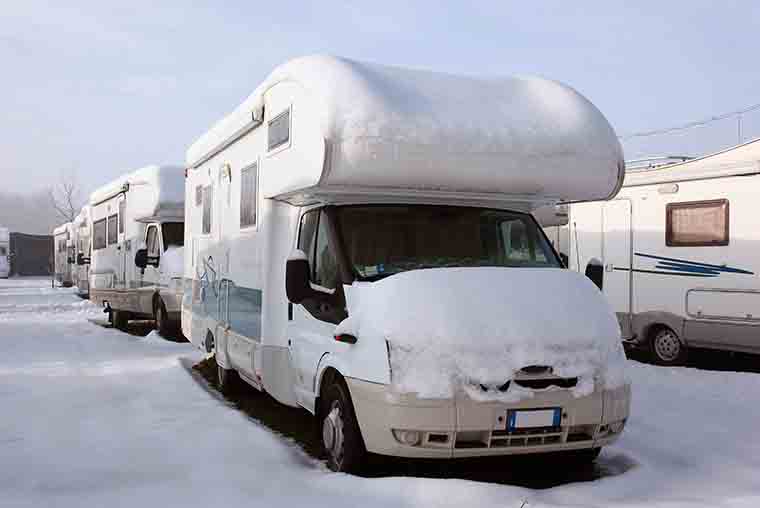
Sadly, most people only discover they have a problem with either their starter battery or their leisure battery when they return to their vehicle after a few months. Normally this is after winter (although in this age of global lockdowns and pandemics, you will probably not be using your motorhome as much as you planned!)
The double-trouble is that you have both lack of use (time while the battery quietly discharges) and cold (which makes the battery miserable.) The two together mean that the battery discharges more quickly, and is even more reluctant to recover afterwards.
Here are some tips for caring for and maintaining your leisure battery over winter:
READ MORE: Full list of everything you need to do to prepare your motorhome for winter storage
- Give it a good charge before you put it away for winter
- Leave it with some form of trickle charger, but leaving it plugged into mains for months might damage the battery too. (The standard on-board charger in many motorhomes can cause over-charging)
- If you have an intelligent battery charging unit (which monitors the battery and adjusts charging voltage and current, you can leave that plugged in all winter.
- If you are unable to attach a charger permanently, either charge your leisure battery once a month or remove it from the vehicle, bring it home and put it on charge. Of course, be careful if this means your alarm/ tracker becomes disabled- read more about motorhome security here
- Make sure it doesn’t get too cold. If you have internal battery storage in the motorhome, it should be ok unless it’s REALLY cold, but if you have external storage you might want to remove it to avoid damage.
- If you are storing the van at home and have a power supply, you can put it on a timer (4/5 hours a day) so it doesn’t overcharge
- You can use a solar panel to provide charge to your battery. Just be aware that solar panels are less effective in winter (weaker sunlight) and also if you use a motorhome cover it may cover the solar panel, making it useless.
How to charge a leisure battery on a motorhome or camper
Most motorhomes and campers have several ways of charging the leisure battery:
- Via the mains when on hook-up (battery charger)
- Using the engine (alternator) when on the road- this is often called ‘split-charge’
- Solar panel
- Generator
- Wind generators (these are common on boats, but less common on motorhomes or campers.)
How to charge a leisure battery from mains/ electric hook up
This one is easy. Providing you have a battery charger (more on those below), you just plug in the mains, turn it on if not already, and relax. It’s that simple on most modern motorhomes and campervans.
How to charge a leisure battery while driving
Remember, it will take time to recharge a battery. Running your engine for 15 minutes is not going to be enough.
Also, the alternator was not designed for leisure batteries- it was designed for starter batteries and that is its main focus. So you need to allow time for the starter battery AND then the leisure battery to be recharged (it’s not linear like that, but all you need to know is it needs time!)
Also, as the battery voltage increases (it gets more charged), the current provided by the alternator will reduce- as it needs to for the engine battery. So an alternator is unlikely to fully charge a leisure battery.
Discharge rates and maths. (DO NOT PANIC…)
As an example, if you have a 100Ah (amp hour) battery (let’s ignore the temperature and just assume it’s working to 100), and you discharge (use) 50%, you need to replace 50Ah
Let’s say the engine alternator has enough to give 5A to the leisure battery. It will take 10 hours to recharge. That’s 10 HOURS of driving. Non-stop.
If you have a bigger battery, or two leisure batteries, you will need even longer.
Luckily, many motorhome on-board battery chargers can give 15-20amps, so it takes a lot less time- 2 or 3 hours. Let’s look at these in more detail.
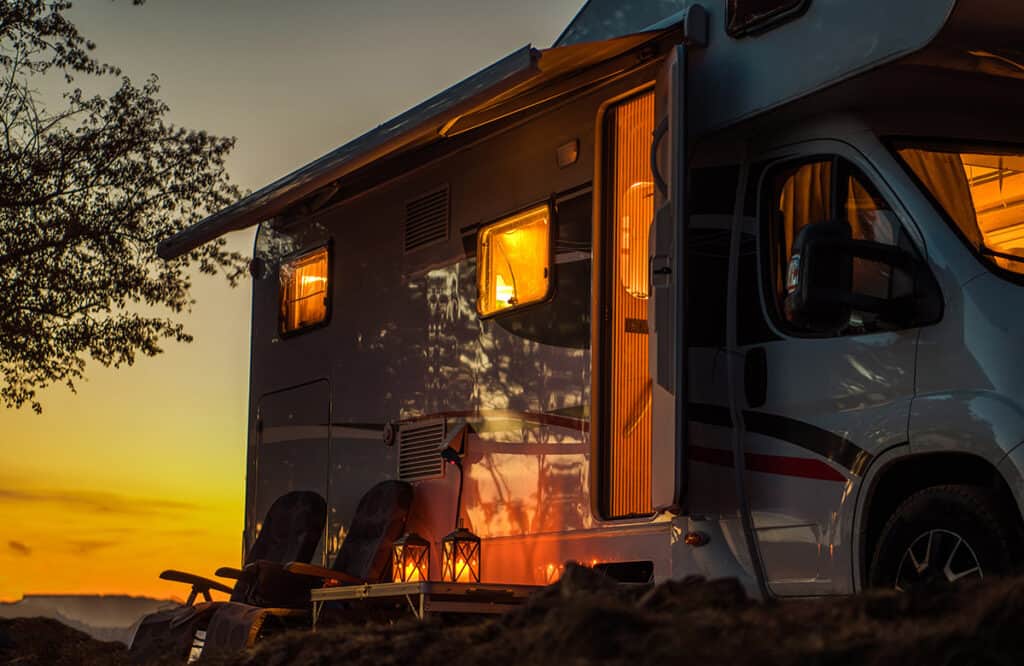
Motorhome Battery chargers explained
Using the mains to charge the leisure battery (and sometimes the engine battery) is common in most motorhomes, but you will need a battery charger. There are several types of charger available- they do different jobs.
Basic chargers
The simplest is a basic unit which gives a fixed output, usually around 13.8 volts. These basic chargers are rarely used in motorhomes these days, because multi-stage chargers are not much more expensive and are much better for the health and lifespan of your battery. Basic chargers are not designed to be left connected long-term.
Multi-stage charger
A multi-stage charger provides charge at different voltages and currents depending on the state of charge of the battery. These are also called maintenance chargers, although not many are designed to be left connected permanently- you should use a timer or disconnect and reconnect regularly.
Usually there are 3 stages:
- Bulk charge mode: gives a maximum voltage and current to recharge the battery quickly. This usually takes it to around 80% full.
- Absorption: Gives a constant voltage, but reduces current. Takes it to nearly full charge.
- Float charge: Gives reduced voltage and low current to keep it near fully charged without damage.
You can get multi-stage charges with even more levels, but the rough idea is the same.
Remember that a battery needs a charger with an output of at least 10% of the battery’s capacity. For example, a 100Ah battery will need at least a 10 amp charger. Any less will reduce the capacity.
How big a battery charger do you need?
The bigger the charger (16A instead of 4A), the quicker it will charge up your battery. If you remember our earlier example about needing to replace 50% of a 100A battery, a 16A charger would do it in just over 3 hours, whereas a 4A one would need 12.5 hours.
Solar Power
Solar panels come in two main types: monocrystalline and polycrystalline. The major difference between the two varieties is size – a poly panel will typically be about 5% larger than a mono for the same quoted output.
Solar panels can be rigid or flexible- for vans we recommend rigid as they are more reliable and don’t often need to be walked on.
How big a solar panel do I need?
The answer to this has nothing to do with the size of your motorhome leisure battery. It has to do with how much energy you plan to use. A small campervan with only a few LED lights will need MUCH less than an 8m motorhome with a fridge, heating, a 12v motorhome TV and who wants to charge lots of electrical devices. The most common size of solar panel is 80- 100W.
Also, solar panels are rarely as good as they say they are. As an example, a 100W panel could technically produce around 8A, but in reality it will be that good – five or six amps might be more realistic. On cloudy days it’s even less.
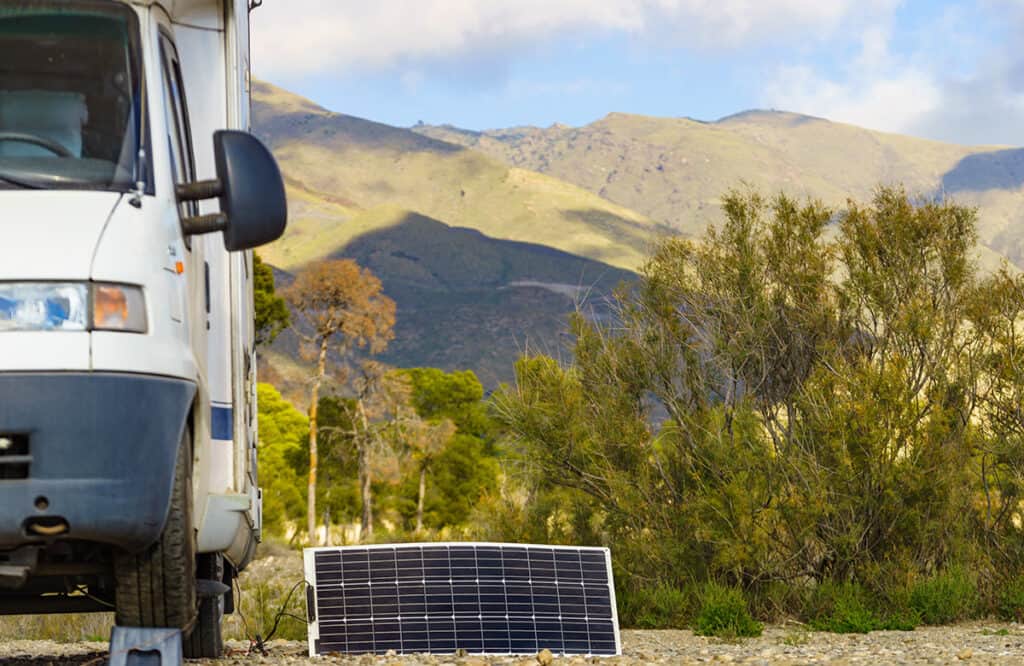
Regulator for solar power
If you have a solar panel, you will need a regulator to control the charge going into the battery.
A typical solar panel in full sunlight could produce around 22 volts, which is too high for a 12-volt battery. The job of the regulator is to reduce this to a safe charging level.
There are many different solar regulators available. Cheaper options include simple split charge or basic fixed voltage charging systems; multi-stage charging is better if you can.
Some electrical units (such as Sargent) are able to take the power from the solar unit and to up both the leisure and engine batteries as required.These systems often have a maximum solar wattage that they can handle, so ensure that the panel you choose does not exceed it.
Bad smell when charging
Occasionally, you might experience a ‘rotten egg’ smell when your battery is recharging. This usually indicates that the battery is being overcharged. The smell comes from gasses being emitted. These gasses could potentially ignite and cause explosions.
If you get this smell, check if the battery feels hot to the touch. If is does, the battery is being overcharged and could be irreparably damaged. Even without a smell, be aware of the temperature of your battery while charging as a hot battery normally means there is a problem.
Always have a window open to allow gases to escape while the battery is charging.
DO NOT disconnect the battery from the charger while it is plugged into the mains- this could cause a spark. Disconnect the mains, then remove the charger.
How do you fix a battery which won’t hold a charge?
A trickle charger is the best way to try to fix a leisure battery that will not hold a charge. Unless it’s been run too low, in which case, see below.
How do you revive a leisure battery?
If you’ve accidentally run your battery too low, slow charge it for at least 24 hours and see if it revives. You can do this via a battery charger or plugging the motorhome into the mains.
Take the battery out of your camper, connect it to a decent battery charger, leave it on trickle charge for a couple of days (3-4 amps),then check the voltage.
If it’s not rising, the battery is probably unfixable and you will need to replace it.
Checking a battery’s charge level
Many motorhome leisure batteries have a light or display to show the charge level. They may not be 100% accurate, but it will give you a rough idea.
A hand-held unit is generally more accurate, but unnecessary in most situations. If you use a hand-held meter, 12.7+v means fully charged, while 12v or below means discharged. 12.4v is about 50%
You can also use a hydrometer to measure the electrolytes in the cells. The reading should be between 1.1 (discharged) and 1.28 (fully charged).
Before a reading, turn off all electrical appliances, including alarms, fridges and clocks that run off the battery. Failure to do so will result in an inaccurate reading. Also, do not do a test for 4 hours after driving or using a battery charger- a recently used battery will give a higher reading
Safe handling of a Lead Acid battery
Battery gas is explosive. If it ignites, it can cause burns or severe injuries. ies and flammable and lead-acid is corrosive. Before you go anywhere near your lead-acid battery, do the following:
- Wear appropriate protective clothing, gloves and eye-wear. Be warned- the acid can damage clothing
- Always remove the negative terminal first when disconnecting a battery
- Never smoke or have a naked flame near a battery
- Sparks can sometimes occur when connecting up a battery and good quality clamps are needed. Temporary crocodile clips, often supplied with battery chargers, are not suitable for permanent connections.
Other posts you might find useful:
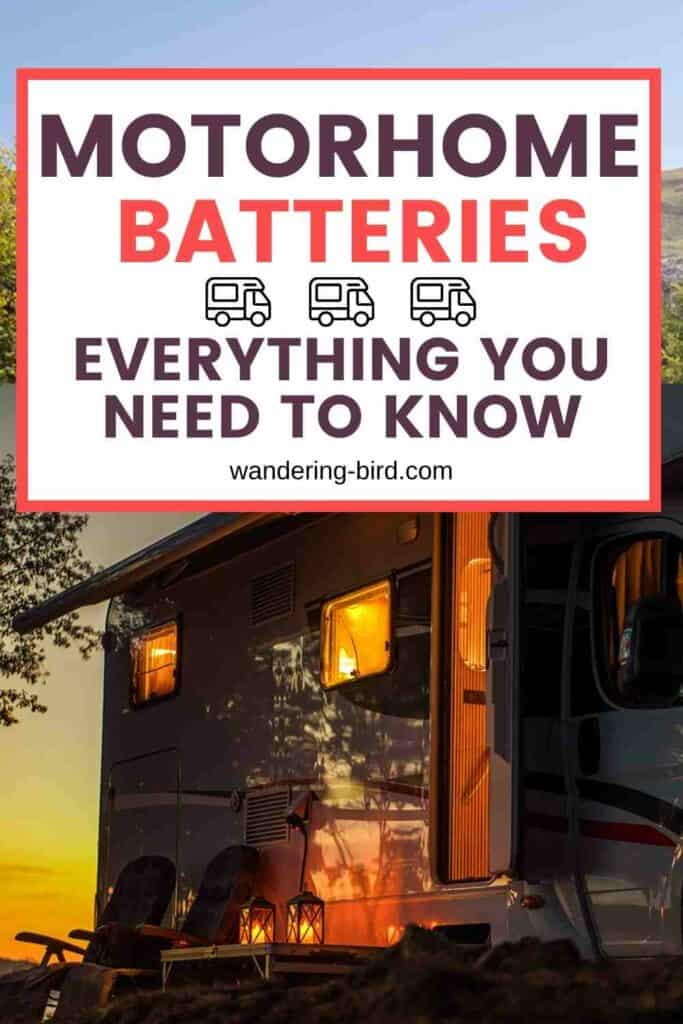

Kat never planned to buy a motorhome. She also never planned to quit her job as an air traffic controller, go touring around Europe in said motorhome, start one of the UK’s largest motorhome travel websites… or get a cocker spaniel.
Find out how she went from stuck in the rat race to being a digital nomad and inspiring thousands of people to have their own epic adventures here.
If you’d like to connect with Kat, send her an email or follow her adventures on social media.


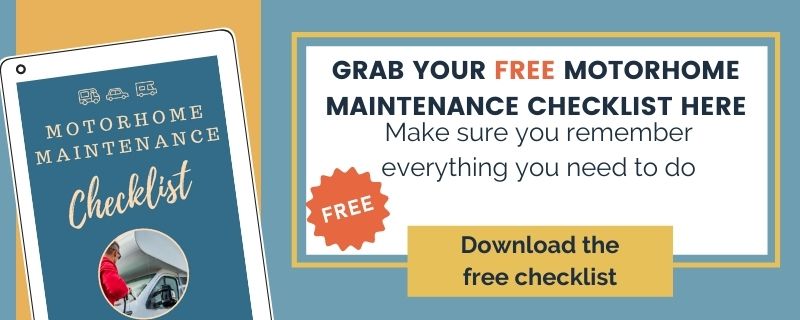


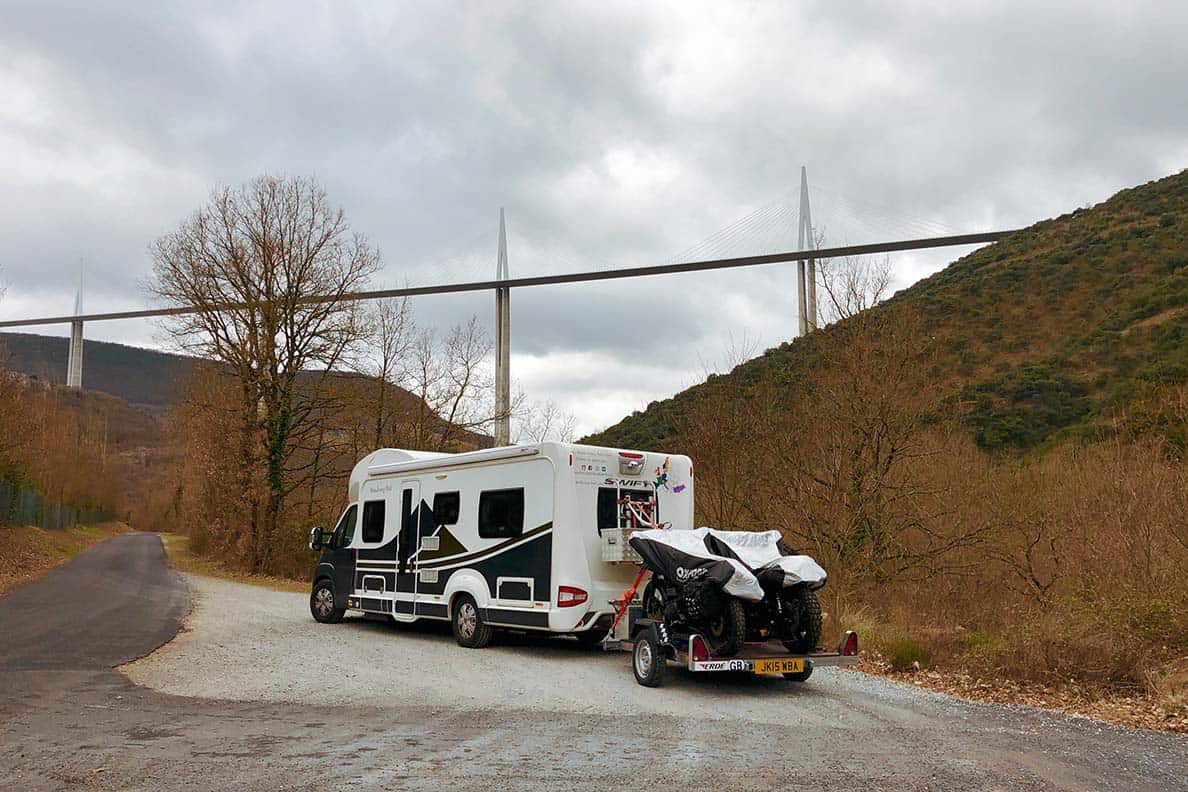
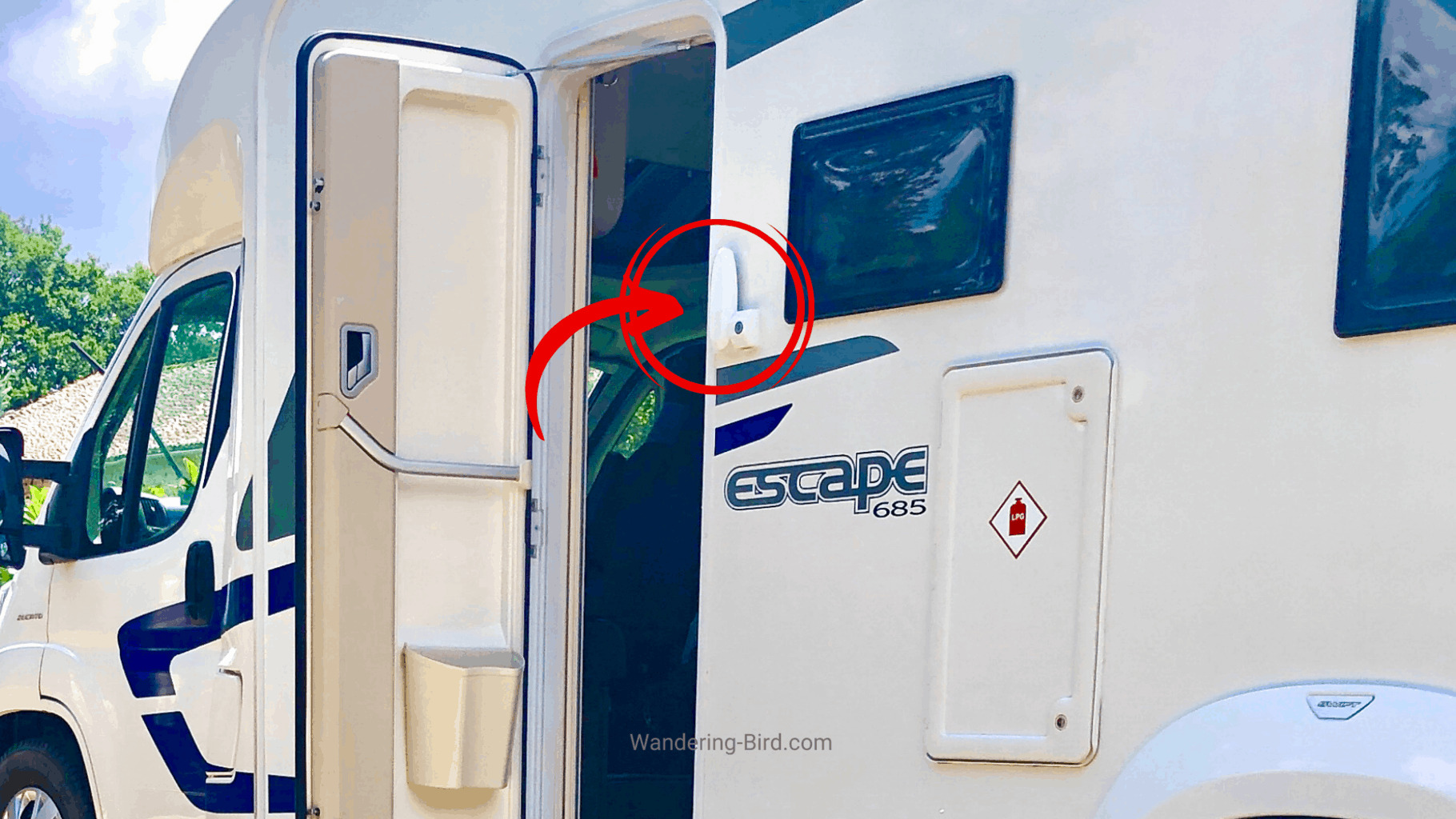
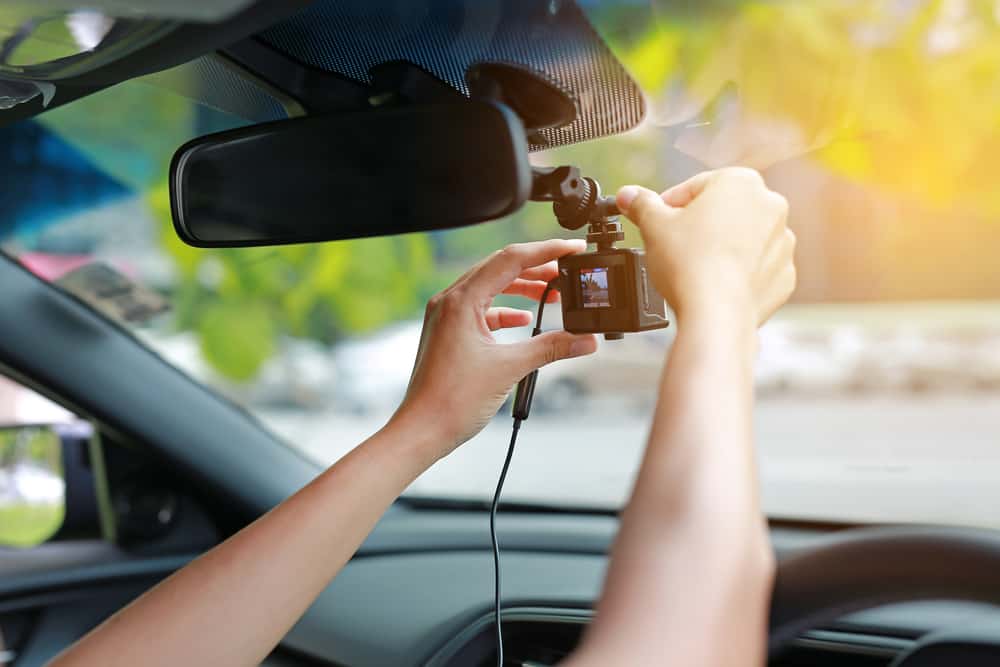
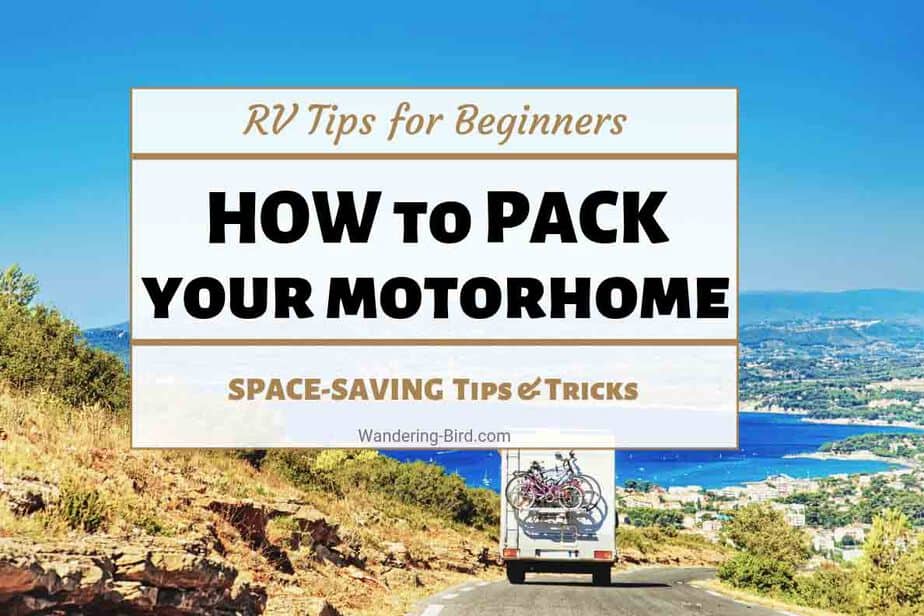
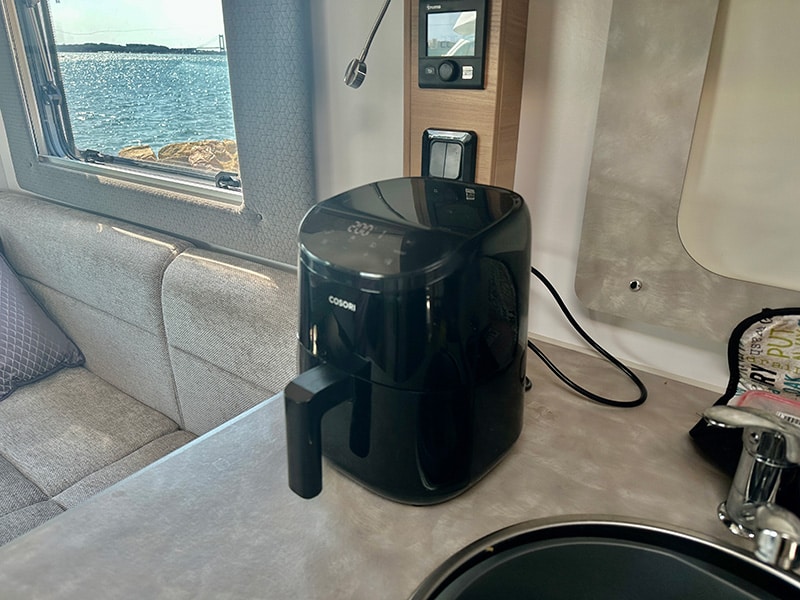
I have a tip for recharging a battery that has been left and apparently won’t take a charge. Connect another fully charged battery in parallel with the flat battery to the charger. After about an hour, “voila”, the flat battery will often start taking charge again. This obviously won’t work on every flat battery, but it is worth trying, and saves throwing an otherwise usable battery away.
Thanks for the tip Neil- hope it helps someone.
Hi Kat, a very useful article, well written and easily understood.
Q’ I have had our motorhome parked up for months now, outdoors with a full cover on but plugged into the mains with a small heater (150 watts) running. Will the leisure battery be OK?
Hi Ian. It’s impossible to say for sure, as there are so many other factors, but it should be fine. If you’re worried, maybe try putting the mains power on a timer so it’s not continuous
Thank you
You’re very welcome- glad it was helpful. 🙂
Fantastic article Kat. We’ve had our motorhome for 4 years now and had to change the battery last year. We also fitted a solar panel which keeps the battery charged.
Because of lockdown we haven’t been anywhere for weeks and will be popping over to check the van (and the battery) this weekend. Fingers crossed as it was -9 in Suffolk last night!
Hi Kat
I have worked all my life with vehicles that sometimes use multi batteries, you can become complacent in connecting/disconnecting and I have seen the results of complacency and carelesness including batteries actually exploding so the warnings and advice you give are so very important and it’s always good to have a refresher course!
Thank you.
Glad it was helpful Nigel. You can definitely never be too careful.
Hi Kat
Found this article very interesting and useful we only got our motorhome end of last year so learning as we go. Thanks for all the tips.
Regards Christy.
Hi Kat
Thank you for the helpful article, very helpful and informative
Great article for a newbie getting to grips with all things mo-ho related ??
Glad you found it useful.